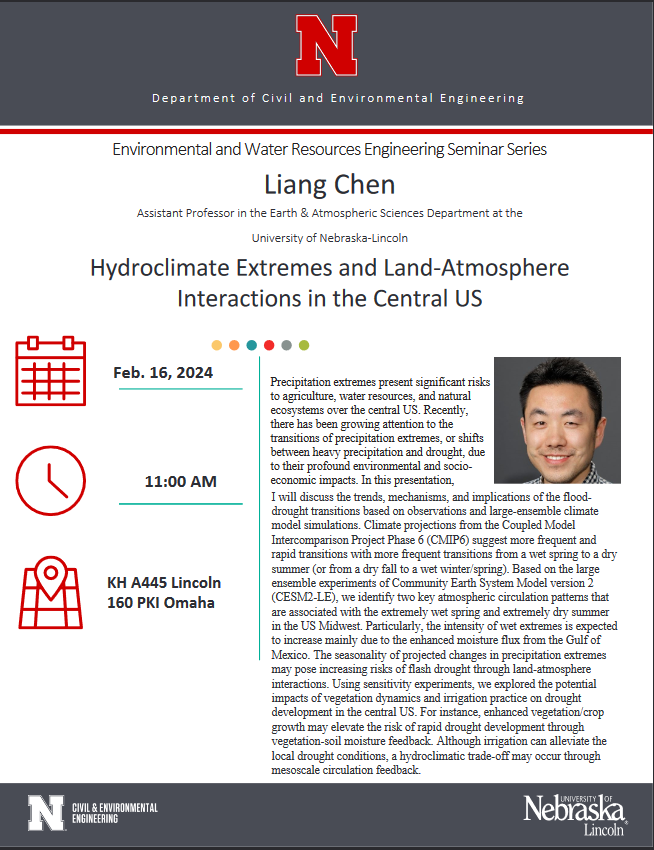
Who: Dr. Liang Chen, Earth & Atmospheric Sciences
When: Friday February 16 at 11:00AM
Where: KH A445 and PKI 160
Precipitation extremes present significant risks to agriculture, water resources, and natural ecosystems over the central US. Recently, there has been growing attention to the transitions of precipitation extremes, or shifts between heavy precipitation and drought, due to their profound environmental and socio-economic impacts. I will discuss the trends, mechanisms, and implications of the flood-drought transitions based on observations and large-ensemble climate model simulations. Climate projections from the Coupled Model Intercomparison Project Phase 6 (CMIP6) suggest more frequent and rapid transitions with more frequent transitions from a wet spring to a dry summer (or from a dry fall to a wet winter/spring). Based on the large ensemble experiments of Community Earth System Model version 2 (CESM2-LE), we identify two key atmospheric circulation patterns that are associated with the extremely wet spring and extremely dry summer in the US Midwest. Particularly, the intensity of wet extremes is expected to increase mainly due to the enhanced moisture flux from the Gulf of Mexico. The seasonality of projected changes in precipitation extremes may pose increasing risks of flash drought through land-atmosphere interactions. Using sensitivity experiments, we explored the potential impacts of vegetation dynamics and irrigation practice on drought development in the central US. For instance, enhanced vegetation/crop growth may elevate the risk of rapid drought development through vegetation-soil moisture feedback. Although irrigation can alleviate the
local drought conditions, a hydroclimatic trade-off may occur through mesoscale circulation feedback.